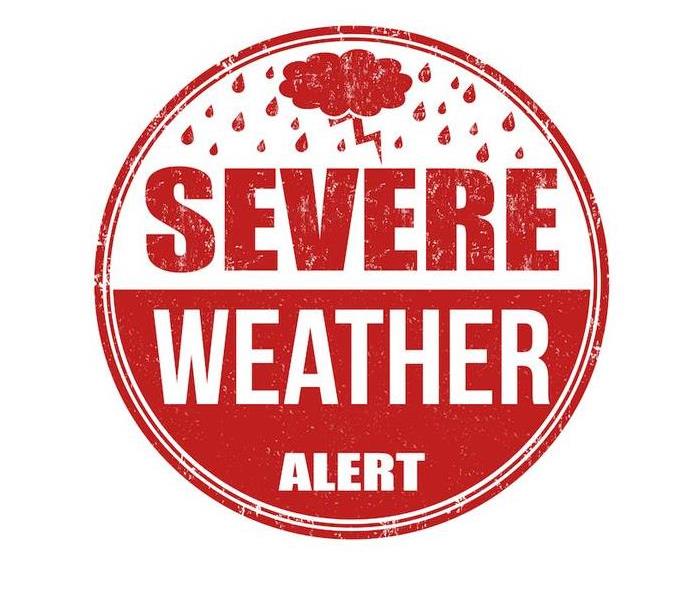Understanding Weather and Storm Alerts | SERVPRO® of Alamo Heights and Downtown San Antonio
7/20/2022 (Permalink)
 If you suspect any damage to your home from a recent storm, call SERVPRO of Alamo Heights and Downtown San Antonio.
If you suspect any damage to your home from a recent storm, call SERVPRO of Alamo Heights and Downtown San Antonio.
One of the unique things about the United States is the different types of weather that vary across the nation. From humid and hot summers to ice cold winters, we have it all.
With all of this weather comes the potential for severe threats every season. In fact, the United States has at least 42 different kinds of weather alerts, and they are broken down into six different categories.
When you are in the middle of severe weather, trying to decipher any sort of alert can be confusing if you are not prepared. Thankfully, we really only need to fully understand the types of alerts that affect us here in Alamo Heights.
<h4creation">Alert Creation
Weather forecasting is a series of predictions that meteorologists make that attempt to forecast how different weather situations will play out. Even though they are simply predictions, a lot of research and model interpreting go into each one to make them as accurate as possible.
The National Weather Service is the large organization that is responsible for creating the forecasts all across the nation. They are broken down into six regional offices across the country to help keep the forecasts more localized. Our office is in the Southern Region and is actually located right in Texas in Fort Worth.
When the NWS creates their forecasts, staff use data from radar, seismic activity, solar patterns and other model predictions. From that forecast, then they send out any corresponding alerts. They attempt to be as accurate as possible to make sure the right people are informed of any incoming threats.
<h4it-a-watch-or-a-warning">Is It a Watch or a Warning?
Understanding the difference between a watch and a warning is of the utmost importance. They are two very simple concepts, but a warning carries a much larger risk than a watch. This language is actually universal across most weather risks.
If a watch is issued in our area, that simply means an incoming storm or weather event has the potential to turn into a more severe threat. Whether the storm is particularly strong or the current weather (heat, humidity, etc) is just right, this is the time to keep an eye on the sky.
If a watch turns into a warning, you should seek shelter immediately. When a warning is issued, there is a dangerous storm or situation present and everyone should be inside and out of the elements.
In Alamo Heights, we commonly see severe storms, tornadoes and flash flooding problems. We are located in “flash flood alley,” after all! It is important to understand each of the corresponding alerts for these events so you can properly prepare for them.
<h4home-and-property">Your Home and Property
Preparing your home in advance of a storm can help minimize damages. If you are aware of any watches before they turn into warnings, you have more time to get ready for any impending weather.
Removing or securing outdoor furniture and clearing your gutters reduces the risk of water issues and property damage. It is also a good idea to take inventory of your emergency kit and make sure it is placed in your safe shelter location.
If you end up suffering damages from a storm, don’t forget to take pictures of the damage, and then call us at SERVPRO of Alamo Heights and Downtown San Antonio. Storm damage restoration is our specialty, and we are passionate about helping our community recover after any type of damage.
Understanding the weather risks associated with our area and knowing the differences between the various alerts will help keep you and your family safe this season.
Experienced storm damage to your home or property? Contact us today for a quick response!




 24/7 Emergency Service
24/7 Emergency Service